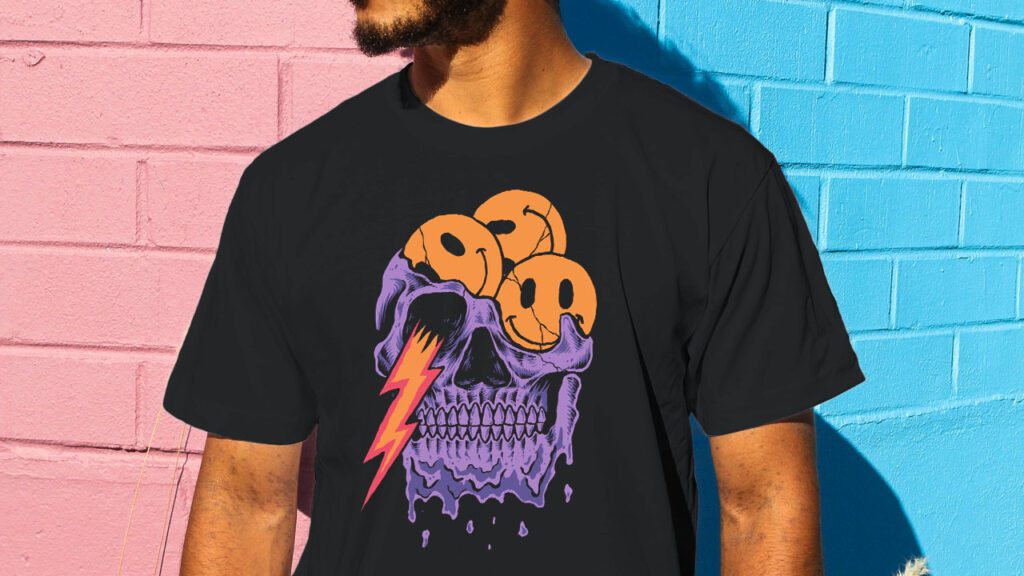So, screen printing’s been getting a pretty cool upgrade lately. Thanks to some nifty tech advancements, there’s this new thing called computer-to-screen (CTS) equipment that’s totally changing the game. We’re diving into how this awesome gear is making the whole screen burning process way quicker, super precise, and a breeze to use. It’s like we’re stepping into a whole new world of screen printing awesomeness!
Traditional Screen Exposure Has Its Challenges
Traditional screen printing can be quite a headache, involving a lot of steps that need to be just right. From getting the screens ready to perfectly lining up the designs, it’s all about precision and patience. Making film positives, coating screens with emulsion, and making sure everything lines up can slow things down and lead to mistakes, especially when short on time. It’s a craft that tests your skills and attention to detail at every turn.
How Does Computer-To-Screen Exposing Work?
The computer-to-screen process streamlines screen printing by directly transferring your digital designs onto screens, eliminating the need for traditional film positives. This method not only simplifies the preparation steps but also ensures high precision and consistency in every print, making the whole process a breeze from start to finish.
Step 1: Prepare Your Digital Design
First, whip up your artwork using any graphic design software you’re comfy with. Once your design looks sharp, you’ll send it over to the computer-to-screen machine.
Step 2: Coat Your Screen
Get your screen ready by applying a photosensitive emulsion, just like you’ve always done. But instead of messing around with film positives, the computer-to-screen machine uses your digital design to get the job done, making it cleaner and more straightforward.
Step 3: Begin Exposure
Now, the magic happens. The computer-to-screen machine gets to work, using your digital design to expose the emulsion-coated screen with pinpoint accuracy. Forget about the hassle of lining things up by hand—this tech makes sure everything’s spot on.
Step 4: Washout Your Screen
Once the exposure’s done, it’s time for a rinse. Washing out the screen clears away the unexposed emulsion, leaving behind a crisp, detailed stencil of your design. And just like that, your screen is print-ready!
Step 5: Your Ready To Print
With your screen perfectly prepped, you’re all set to roll. Just load up the screen on your press, apply some ink, and start printing. The beauty of computer-to-screen is in the precision and ease it brings to the table, ensuring every print is as good as your first.

Benefits Of Computer-To-Screen Exposing
Just when you thought screen printing couldn’t get any cooler, along comes computer-to-screen equipment to shake things up. This cutting-edge tool is making waves by transforming how designs come to life on screens, making the whole process slicker and way more fun.
Benefit 1: Direct Digital Transfer
With computer-to-screen tech, you can skip the old steps and zap your designs directly from your computer onto the screen. It’s like sending an email instead of mailing a letter – quicker and way less hassle, with fewer mistakes along the way.
Benefit 2: Spot-On Precision
Forget about the guesswork of getting your designs to line up. Computer-to-screen is like a super-accurate buddy who makes sure your design hits the screen perfectly every single time, ensuring your prints look exactly as you envisioned.
Benefit 3: Speedy Screen Prep
Computer-to-screen gear speeds up the whole prep process. Without the need to mess with film positives, you can get your screens ready fast, helping you zip through orders like a pro.
Benefit 4: Crystal-Clear Details
Got a design with lots of fine lines and details? No problem. Computer-to-screen brings those tiny details to life with precision, making your prints stand out with razor-sharp clarity.
Benefit 5: Fewer Oops Moments
By cutting out the manual bits like making film positives, computer-to-screen also cuts down on mistakes. Fewer errors mean less waste and frustration, saving you time and money.
Benefit 6: Consistent Quality
Computer-to-screen ensures your prints are consistent from the first to the last. This reliable precision means you can promise top-notch quality every time, keeping your customers happy.
Benefit 7: Quicker Turnaround Times
In a rush? Computer-to-screen helps you get those screens ready quicker, so you can meet tight deadlines and keep your turnaround times short and sweet.

The Wrap-Up: Computer-To-Screen Exposing
Computer-to-screen exposing tech is changing the game in screen printing, making everything from creating the screen to the final print faster, easier, and more accurate. More and more printers are using this cool tool, enjoying fewer mistakes, quicker jobs, and super sharp details in their prints. It’s a big deal in the world of making cool designs on clothes and stuff, showing just how awesome digital tricks can be for pushing the industry to new heights.
- A Look At Direct-To-Embroidery Printing Technology
- Screen Printing: Boost Accuracy With Laser-To-Screen Tech
- Impressions Expo Long Beach 2024 Walkthrough
- Screen Printing: A Guide To Measuring Screen Tension
- Screen Printing: Choosing The Right Mesh Count
- Top 5 Embroidery Machine Factors To Consider When Buying Equipment
- Screen Printing: Comparing Aluminum vs Wood Frames
- Screen Printing: Understanding The Impact Of Mesh Counts
- DTF Printing: How To Choose The Right Printer & Dryer
- Screen Printing: The Advantages Of Newman Roller Frames




